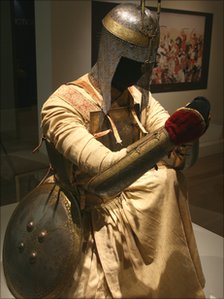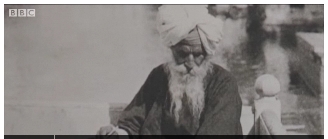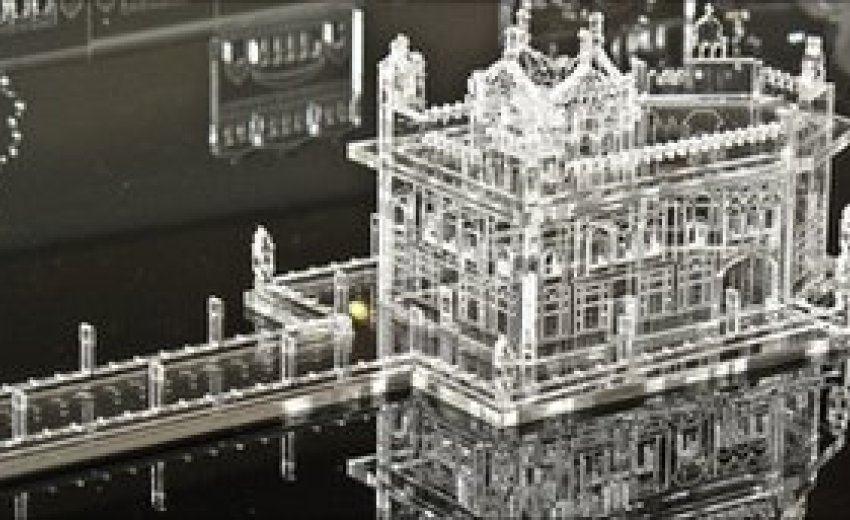
A traditional Sikh warrior outfit on display at the exhibition
Celebrating a century of London Sikh culture
25 August 2011: Going back more than two centuries, nearly 80 historical artefacts are on display in central London at the world's first major exhibition on the Golden Temple of Amritsar, north India.
They include some of the earliest-known paintings and photographs of the temple, along with film footage and eye witness accounts from western travelers.
The 10-week show, organized by the UK Punjab Heritage Association, has already attracted thousands of visitors, including many from across the world.
The exhibition traces the temple's history, from the 1800s up until the middle of the 20th Century - described as the "golden era" of the temple and the height of Sikh empire.
On the ground floor of the Brunei gallery at the School of Oriental and African Studies, in the Bloomsbury area, an accurate to-scale Perspex model of the temple, as it once stood, is displayed on a table.
It shows trees surrounding the shrine, along with tall buildings, known as "bungas", where intellectuals would meet and debate.
Musical traditions
Parmjit Singh, the museum's curator, said the model depicts the shrine at its best.
"When it was at its peak, the temple was not only recognized as a center of devotion for pilgrims of many other faiths, it was also a center of learning,'' he said.
''The Sikhs at one point were important players on a world stage. We want people to be able to experience that with real objects,'' he explained.
The exhibition paints a picture of a shrine where everyone has been welcome for hundreds of years. Perspex model of the Golden Temple.

This "all-inclusive" theme is illustrated through some of the earliest color film footage of life inside the temple - showing people coming from all walks of life.
Visitors learn there were Muslim singers, known as rababis, in the temple up to the partition of India in 1947.
They would perform alongside the Sikhs; a tradition going back to the times of Guru Nanak, the founder of the religion.
 People can hear this music, including a rare recording of one of the last great singers to have performed - once again echoing the message of a shrine "open to all", regardless of background.
People can hear this music, including a rare recording of one of the last great singers to have performed - once again echoing the message of a shrine "open to all", regardless of background.
Koh-I-Noor receipt
The temple's history is shaped by the rise and fall of the Sikh empire and the second floor of the exhibition illustrates this journey with various historical items from Sikh history.
In the center of the floor is a full-sized mannequin of a Sikh warrior dressed head to foot in original, ornate, gold body armor and weaponry.
He is dressed in the way a high-ranking warrior would have been at the height of the Sikh Empire.
The eventual decline of the Sikh Empire is captured in a glass cabinet displaying the original hand written receipt for the transfer of the famous Koh-I-Noor Diamond to the British Empire.
The first Sikhs came to London a century ago

Nearly all the artefacts being showcased have been borrowed from private collectors and therefore have never been seen by the public anywhere in the world.
Davinder Toor, a London-based collector who has lent many items to the exhibition, said he had found these objects all over the world.
''For me tracing and finding these objects is simply a passion; it's like time travel for me.
''I've been collecting these artefacts for more than 12 years, it's helped me to rediscover the history of my ancestors and I want to share that with others.''
See video: http://www.bbc.co.uk/news/uk-england-london-14664641
Visit the exhibition website: gt1588
